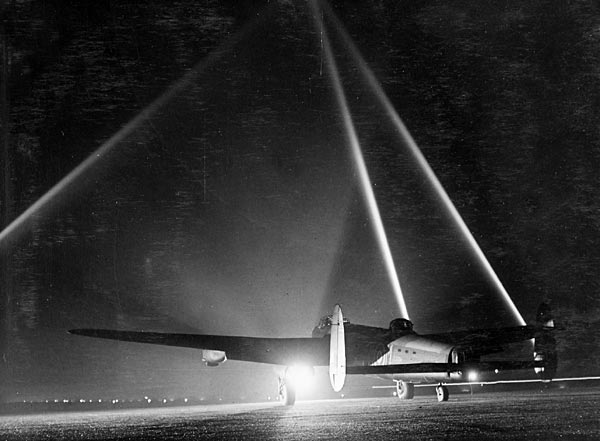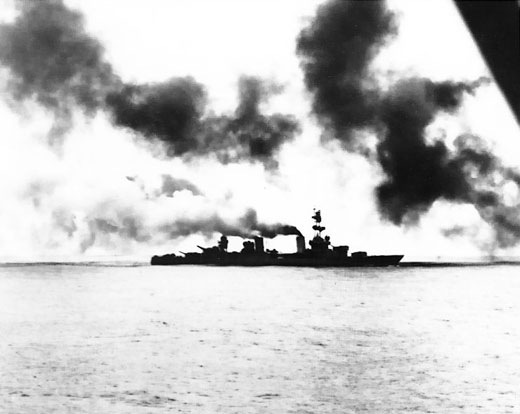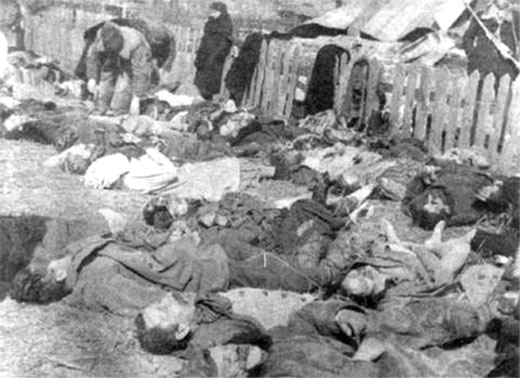Air Operations, CBI
BURMA- During the night 6 7th Heavy Bomb Group B-24s mine the Rangoon River while 6 other B-24s mount a diversionary bombing attack against the city of Rangoon and the Mingaladon airfield at Rangoon.
Air Operations, Central Pacific
XIII Bomber Command B-24s attack the airfield on Nauru.
Air Operations, Europe
BOMBER COMMANDEvening Ops:
- 455 aircraft including 173 Wellingtons, 157 Lancasters, 114 Halifaxes, 9 Mosquitos and 2 Stirlings, are sent to Duisburg.
- This raid turned out to be one of the few failures in this series of raids on Ruhr targets. It is cloudy and accurate Oboe sky-marking is less than good because 5 Oboe Mosquitos are forced to turn back because of technical difficulties and 1 other is lost. As a result the bombing is widely scattered.
- 3 Wellingtons, 1 Halifax, 1 Lancaster and 1 Mosquito are lost.
Lancaster Ready for Take-off |
 |
- 5 OTU aircraft drop leaflets over france without a loss.
Air Operations, New Guinea
- 43rd Heavy Bomb Group B-17s attack Wewak and a single B-17 attacks Finschhafen.
- 3rd Light Bomb Group B-25s attack targets of opportunity in and around Mubo.
Air Operations, Tunisia
- NASAF B-25s attack targets around Grombalia.
- 81st Fighter Group P-39s destroy several German Army trucks while NATAF fighters, A-20s, and B-25s attack a fuel dump, roads, rail lines, and the Sfax dock area, and strafe the Djebel Tebaga landing ground and motor vehicles encountered between Faid and Gabes. 1 Ju-88 is downed about 0940 hours near the coast by an 82nd Fighter Group P-38 pilot.
- IX Bomber Command B-25s mount two missions against targets along the Mareth Line, and P-40s damage and estimated 50 trucks, tanks, and other vehicles in strafing and bombing attacks. Several USAAF fighters are lost ton intense ground fire.
Axis Diplomacy
In one of the major misreadings of history Mussolini writes to Hitler that Russia is so weakened after Stalingrad 'she cannot hope, at any rate for a long time to come, to constitute a serious menace.'
[Bering Sea
BATTLE OF KOMANDORSKI ISLANDRear-Adm C. H. McMorris' squadron of 2 cruisers, the Salt Lake City (CA-25) and the Richmond (CL-9), and 4 destroyers meets a considerably superior Japanese force of 3 cruisers, including the heavy cruiser Nachi, and 5 destroyers under Vice-Adm Moshiro Hosogaya, off the Komandorski Islands. The Japanese force is escorting a supply convoy for the Japanese garrisons in the islands of Kiska and Attu, in the Aleutians. The American squadron courageously engages the enemy, and at 8:40a.m. a shell from the Richmond (CL-9) hits the Nachi, starting a fire. About 9:00a.m. several other hits are scored on the Nachi, which is seriously damaged. The Japanese commander responds quickly, and about 9:30a.m. concentrates his fire on the Salt Lake City (CA-25), which takes avoiding action, but has to slow down when one engine breaks down. At 10:10a.m. the Salt Lake City (CA-25) receives a direct hit which starts a major fire. A second hit opens a leak in the hull. While the Japanese ships bear down on the American vessel to finish her off, the US destroyers take on the Japanese formation and drive them off. One of the destroyers, the Bailey (DD-492), is damaged in the exchange of naval gunfire. Short of fuel, and fearing that more substantial American forces may join in and quite possibly US aircraft from the base at Amchitka also, Vice-Adm Hosogaya calls of the engagement and withdraws. The Japanese transports made for home as soon as the battle began, and from now on the Aleutian garrisons will be supplied only by submarine. Although the last great naval battle fought with naval guns end with honors even, it is a strategic victory for the Americans, whose blockade of the Aleutians is never again forced by surface vessels. Hosogaya's conduct of the battle is considered irresolute and timid and he is relieved of his command.
US Heavy Cruiser Salt Lake City |
 |
Eastern Front
The spring thaw halts the fighting around Kharkov.
[North Africa
TUNISIAThroughout the day the Axis forces on the western flank in the Tebaga Gap are fiercely attacked by New Zealand troops with the RAF in close support. By the evening the German defenses have been worn practically to nothing and 1st Arm Div heads for El Hamma by the light of the moon.
The British 8th Army, having adopted a new plan called SUPERCHARGE, and having abandoned the orginal plan, PUGILIST, renews its assault on the Mareth Line in the afternoon following a destructive aerial bombardment which lasts for 2-1/2 hours. The New Zealand Corps, leading the assault against the western flank of the Mareth Line, jumps off at 1600 and penetrates the enemy positions in the defile between Djebels Tebaga and Melab. The X Corps' 1st Armored Div, exploiting this success, breaks through the defile and pushes toward El Hamma as operations are continued through the night by moonlight. The Indian 4th Div, XXX Corps, clearing the Médenine-Bir Soltane road, is beyond Hallouf Pass.
[Vichy, Politics
Laval organizes a cabinet re-shuffle to consolidate his power.
[ Massacre in Lipniki, Poland |
 |